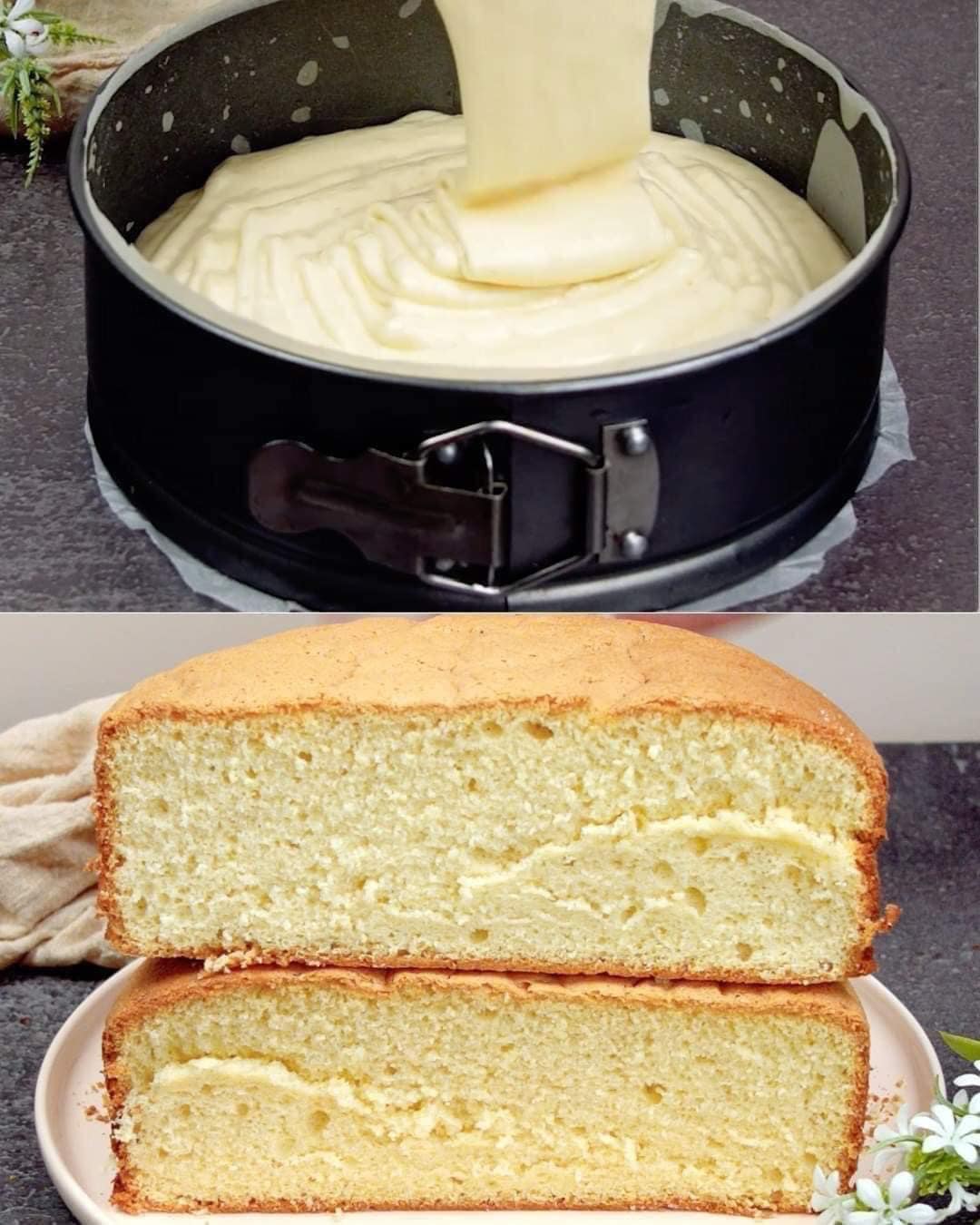Here’s a detailed recipe for a classic sponge cake, using simple ingredients to create a light and fluffy dessert. This recipe is perfect for baking enthusiasts looking to make a delicious cake for any occasion.
Full Recipe:
Ingredients:
- 200 g (4 large eggs): The primary binding agents in the recipe. Eggs provide structure and stability to the cake, helping it rise and maintain its fluffy texture.
- 140 g (1 cup + 1 tablespoon) granulated sugar: Sweetens the cake and contributes to its texture. The sugar is also crucial for creating a light, airy crumb.
- 130 g (1 cup + 2 tablespoons) cake flour: A light flour that helps in achieving a tender crumb. Cake flour has a lower protein content compared to all-purpose flour, which helps the cake rise properly.
- 20 g (4 teaspoons) milk: Adds moisture to the batter, contributing to the cake’s softness.
- 40 g (2 ⅔ tablespoons) oil: Provides richness and moisture, making the cake more tender.
- ¼ teaspoon vanilla extract (optional): Enhances the flavor of the cake with a subtle vanilla note.
Instructions:
- Preheat the Oven: Preheat your oven to 180°C (350°F). Grease and line an 8-inch round cake pan with parchment paper to prevent sticking.
- Prepare the Cake Batter:
- Separate the Eggs: Separate the egg yolks from the egg whites. Place the egg whites in a large, clean bowl.
- Beat Egg Whites: Using an electric mixer, beat the egg whites until soft peaks form. Gradually add half of the granulated sugar and continue beating until stiff peaks form. The mixture should be glossy and hold its shape.
- Mix Egg Yolks and Sugar: In another bowl, whisk together the egg yolks and the remaining granulated sugar until the mixture is pale and slightly thickened.
- Add Milk and Oil: Mix the milk and oil into the egg yolk mixture. If using vanilla extract, add it at this stage.
- Incorporate Dry Ingredients: Sift the cake flour into the egg yolk mixture and gently fold until combined. Be careful not to overmix to avoid a dense cake.
- Fold in Egg Whites: Gently fold the beaten egg whites into the egg yolk mixture in thirds. Use a spatula to fold, lifting the mixture from the bottom and turning it over. This process helps to maintain the airiness of the batter.
- Bake the Cake: Pour the batter into the prepared cake pan and smooth the top with a spatula. Bake in the preheated oven for 25-30 minutes, or until the cake is golden brown and a toothpick inserted into the center comes out clean.
- Cool and Serve: Allow the cake to cool in the pan for about 10 minutes, then transfer it to a wire rack to cool completely before frosting or serving.
Possible Questions:
- Can I use all-purpose flour instead of cake flour? Yes, but the texture might be slightly different. If using all-purpose flour, you can sift it multiple times to make it lighter.
- What can I use as a substitute for eggs in this recipe? For an egg substitute, you can use a commercial egg replacer, applesauce, or mashed bananas, though the texture and rise of the cake might differ.
- Can I make this cake in advance? Yes, you can bake the cake a day or two ahead. Store it in an airtight container at room temperature or freeze it for longer storage.
Tips:
- Ensure Ingredients are at Room Temperature: This helps them mix more evenly and contributes to a better texture.
- Be Gentle When Folding: Overmixing can deflate the batter and lead to a dense cake.
- Check Doneness Early: Oven temperatures can vary, so start checking for doneness a few minutes before the recommended baking time.
Storage Instructions:
- Room Temperature: Store the cake in an airtight container at room temperature for up to 3 days.
- Refrigerator: For longer storage, you can refrigerate the cake, where it will last up to a week. Ensure it is well-wrapped to prevent it from drying out.
- Freezer: To freeze, wrap the cooled cake tightly in plastic wrap and foil. It can be frozen for up to 3 months. Thaw in the refrigerator before serving.
Nutritional Facts (per serving, based on 8 servings):
- Calories: Approximately 210 kcal
- Carbohydrates: 27g
- Protein: 5g
- Fat: 9g
- Fiber: 1g
- Sugar: 15g
Conclusion:
This classic sponge cake is a versatile and delightful treat that’s perfect for any occasion. With its light, airy texture and subtle sweetness, it pairs wonderfully with fresh fruits, a dusting of powdered sugar, or a dollop of whipped cream. Whether enjoyed on its own or as part of a more elaborate dessert, this cake is sure to impress. Enjoy baking and savoring this simple yet delicious recipe!

